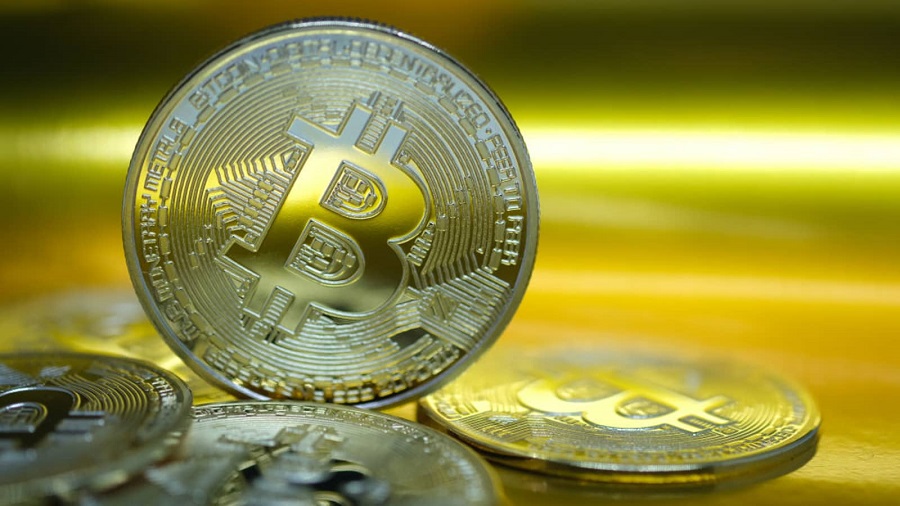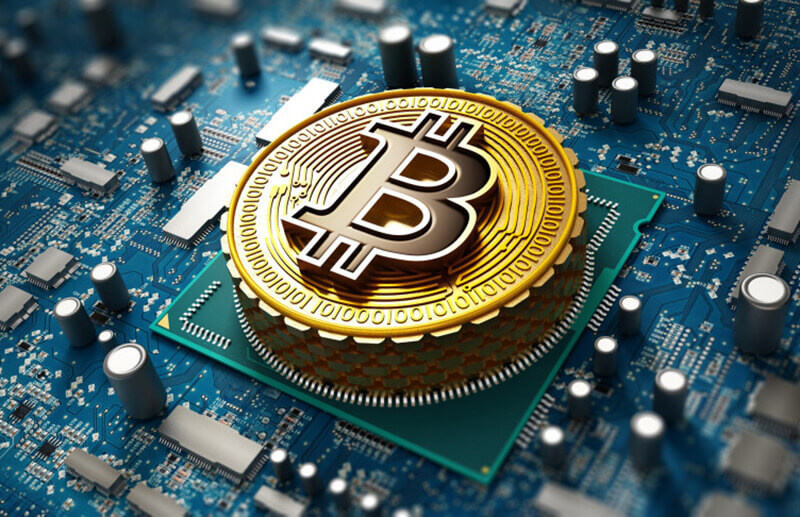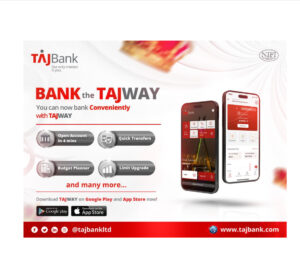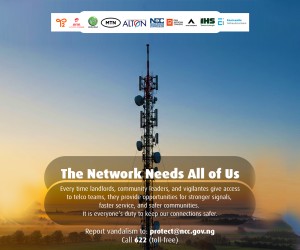Key Highlights
- The surge in mining activity has raised concerns about the environmental impact of Bitcoin as it requires a massive amount of energy to maintain the network.
- Several new projects have emerged that aim to reduce the energy consumption of Bitcoin mining while maintaining the security and decentralization of the network.
- Some of the most innovative and promising solutions to the environmental impact of Bitcoin mining include Renewable Energy Credits, Block Green, Tokenizing clean Bitcoin, and Efficient cooling. T
Over the past few years, the growing popularity of Bitcoin and other cryptocurrencies has led to a significant increase in the demand for mining, which is the process of validating transactions and creating new blocks in the blockchain network.
However, this surge in mining activity has also raised concerns about the environmental impact of Bitcoin, as it requires a massive amount of energy to maintain the network.
Bitcoin mining is an energy-intensive process that requires powerful computers to solve complex mathematical equations. Bitcoin mining consumes about 145 terawatt hours (TWh) of electricity per year, says data from Cambridge University’s Centre for Alternative Finance, which is about the power consumed by Sweden, according to the International Energy Agency.
These computations are necessary to validate transactions and create new blocks in the blockchain, which is the public ledger that records all Bitcoin transactions. The process of validating transactions and creating new blocks is known as mining, and it is rewarded with newly created Bitcoins.
As the value of Bitcoin and other cryptocurrencies continue to soar, the demand for mining has increased, resulting in a massive increase in energy consumption. According to some estimates, Bitcoin mining alone uses as much energy as the entire country of Argentina, which has raised concerns about the environmental impact of Bitcoin mining.
To mitigate the environmental impact of Bitcoin mining, several new projects have emerged that aim to reduce the energy consumption of Bitcoin mining while maintaining the security and decentralization of the network. These projects range from new mining algorithms to renewable energy-powered mining farms.
In this article, we will take a closer look at new projects that are looking to mitigate Bitcoin mining’s energy footprint. These projects represent some of the most innovative and promising solutions to the environmental impact of Bitcoin mining, and they could potentially pave the way for a more sustainable future for the cryptocurrency industry.
Renewable Energy Credits
This product is offered by crypto lender BlockFills and fund manager, Isla Verde Capital, and it aims to help not only miners but also investors to find a “green” solution for their energy usage.
The offering essentially is tradable environmental assets in the forms of carbon emissions offsets and Renewable Energy Credits (RECs). Carbon credits, assets that represent sequestered greenhouse gasses through projects such as reforestation, are as well-known as they are criticized.
Renewable energy credits (RECs) represent ownership of the sustainability of electricity produced. These certificates represent 1 megawatt-hour (MWh) of power produced from renewable sources such as wind, hydro, and solar. They are usually separate from any power purchase agreements and are usually traded over the counter (OTC).
BlockFills and Isla Verde Capital tailor the purchase of RECs and carbon credits to miners’ needs, and later retire them, such that they can make claims about renewable energy sources.
The RECs are also geared toward Bitcoin investors. John Divine, OTC trader at BlockFills explained, “Massive asset managers are now looking at bitcoin, but they have these sustainability mandates that they must follow.” The RECs can help them invest comfortably. He further stated this might actually raise the price of RECs, “which directly incentivizes investment in renewable energy technology.”
Incentivizing sustainability
Switzerland-based Block Green is another project that is trying to incentivize sustainable mining through a decentralized lending protocol. On their platform, liquidity providers looking for bitcoin-native investments can buy future hash rates over a specified period of time, or computing power.
The platform includes “know-your-miner” information about a company’s financials, operational data, energy sourcing, and strategy. Block Green believes that market mechanisms on the platform will incentivize sustainable mining as liquidity providers will pick miners with sustainable operations, lowering their cost of capital.
According to a spokesperson at the firm, “We are currently working with some of the largest miners in the U.S. and Canada and we have begun integrations with institutions such as custodians, exchanges, and asset managers looking to give users access to transparent and scalable returns on their bitcoin.”
Tokenizing clean bitcoin
Another solution that is using financial incentives is offered by Clean Incentive and Sustainable Bitcoin Protocol (SBP). These companies are trying to promote investments in “clean” Bitcoin by creating new, blockchain-based assets that miners can trade to capitalize on their use of renewables. Investors looking to verifiably own environmentally conscious Bitcoin are the right fit for these assets.
With SBP, miners can verify their use of clean energy with third-party auditors and be added to a registry. After that, for every block reward they get, they receive a Sustainable Bitcoin Mining Certificate, a blockchain-based asset that they can sell to institutional investors. SBP completed its first transaction of a sustainable Bitcoin certificate in February.
Similarly, Clean Incentive looks to “collect, validate and tokenize ESG [environmental, social, and governance] attributes from a network of miners,” said its founder and CEO Casey Martinez, a data scientist with experience in renewable energy. The startup is still in stealth mode, but has already onboarded several miners, Martinez said Clean Incentive partnered with a small-scale miner from Canada, Ocean Falls Blockchain, in November.
Efficient cooling
Some of the more technical solutions that firms are providing include both hardware and software-related products. Immersion cooling firm, LiquidStack, offers a hardware-based cooling solution that can cut the energy used by the computers in Bitcoin mines by 40% and reduce their land use by one-third.
For every megawatt (MW) of energy used for the actual computing in a data center, LiquidStack’s solution uses 0.02 MW for cooling, whereas other options use 0.1 MW to 0.7 MW, LiquidStack said. The firm, one of the earliest in the space, received funding from Trane Technologies (TT) in March, a 150-year-old firm in the heating and cooling space which brought in $16 billion in revenues in 2022.
Amber Mulligan, VP of Strategic Sales and Marketing, Commercial HVAC Americas at Trane stated, “What made LiquidStack attractive was its potential to improve sustainability for data centers, including bitcoin mining, and its innovation.”
LiquidStack’s technology also makes heat reuse easier and more efficient, opening the door to a host of synergies for miners, said Mulligan, noting that because the heat is actually managed with liquids instead of traditional air cooling, capturing it and directing it to other uses is easier.
Conclusion
On the software side, Vancouver-based mining services firm, Lincoln, has created a program that miners can use to more efficiently and profitably manage their operations, including their participation in demand response programs and heat reuse activities.
Demand response is when a miner, or another energy consumer, shuts down their operations at times of peak demand, such that the grid can meet the consumption needs. Often miners get paid for this. Heat reuse refers to the practice of using excess heat from a mining operation for another activity, such as greenhouse farming.
The software, called Rails, integrates real-time data from over 20,000 grid nodes in 9 deregulated electricity markets in the U.S. and Canada, said in a press release. CEO Medi Naseri, stated, “Large-scale miners use Lincoin to monitor real-time profitability, manage and optimize their operations, streamline tasks and participate in grid ancillary services while smaller miners use Lincoin to innovate by managing heat in greenhouses, monetize their surplus solar energy generation, or simply mine intelligently.”























